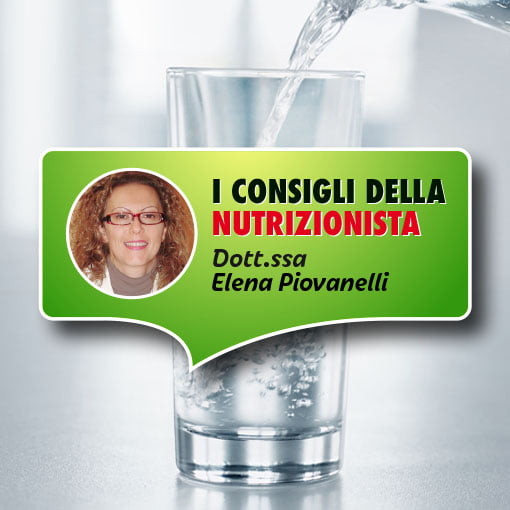Water


For the human organism, water is essential for life. Furthermore, it is the component which exists in highest quantities in the body: there isn’t a single system within the human body that doesn’t directly depend on water, it is therefore perfectly obvious why maintaining correct hydration levels is essential for good health.
The water within our body is partially lost and consumed every day (through our urine, faeces, perspiration and breath), it must therefore be continually replenished.
The elderly and younger children are most at risk of dehydration, much like those who tend not to drink very much, due to the fact that they don’t often feel thirsty.
A number of nutrition experts have decided to publish an innovative pyramid, aimed at providing information on correct hydration to the healthy adult Italian population. Let’s take a closer look!
“Naturally, water is at the base of the pyramid: out of at least 1.5-2 litres of liquid, it is suggested that we drink 5 glasses of water (of 200 ml each), this is necessary, on average, for maintaining the physiological water balance.”
The water balance must be maintained by drinking mainly water, either tap or bottled, both of which are safe and regulated.
Water doesn’t contain any calories, and any short-term variation in body weight, due to excess loss or retention of water, is false and momentary.
It is not true that sparkling water is harmful to health. It is only when the quantity of gas is very high that minor issues might occur in those who already suffer from gastric or intestinal problems.
“Tea, decaffeinated coffee, barley coffee, infusions and herbal teas, are found on the 2nd level and can make up the remaining quota of liquids for the day (from 0 to 3 glasses).”
For those who love to sweeten their drinks, be careful not to add too much sugar and honey: choose blends that you already find enjoyable to drink, and train your taste buds to appreciate these drinks without adding any sweeteners.
“Milk, pressed vegetable juice, freshly squeezed fruit juice and fruit juice (containing 100% fruit) are situated on the 3rd level, with a suggested intake of 0-2 glasses.”
Milk and drinks based on soya, oats, etc. can be consumed without adding sugar, since our palate already perceives them as being sweet.
However, be careful with industrial fruit juice: with a little bit of organisation you can easily substitute it with freshly squeezed juice prepared at home, which is much healthier and tastier.
“On the 4th level we find all the other types of “juices”, with a suggested intake of 0-1 glasses, or 0-1 cans of non-alcoholic beer”.
Remember that labels such as “with pulp”, “made with fruit juice”, often hide the fact that there is a low percentage of fruit and high levels of sugar, so be sure to read the labels carefully, and don’t be seduced by the captivating images that often appeal to us while we are shopping.
“It is only on the 5th level that coffee appears (both espresso and filter): preferably consumed without sugar, with an intake of between 0 and 5 small cups (equivalent to 0-200 ml) but ensuring that any other sources of caffeine consumed during the day are taken into consideration (energy or cola flavoured drinks, chocolate).”
Excessive caffeine consumption has negative implications for our health, increasing the probability of a number of health issues, for example, osteoporosis.
It is therefore essential to limit the consumption of these drinks, this is especially the case for the younger generations who are often more likely to drink them too much.
“The pyramid has a 6th level for sports drinks formulated for rehydration either before or after intense physical activity, containing various types of sugars and electrolytes, as well as flavourings and colourings to appeal to those who don’t like good old water”.
During moderate physical activity, the majority of people lose around 1-2 litres of sweat per hour, but in some cases it can be as much as 4-6 litres/hour.
A 1% loss in body weight during sporting activity can lead to a 5% drop in physical performance, and an even greater loss that is not adequately compensated for, can leave the person open to life-threatening conditions (hyperthermia, heatstroke).
“Finally, at the tip of the pyramid we find those drinks which, for various reasons, should only be consumed occasionally: soft drinks, energy drinks (energy and sports drinks can be dangerous if consumed regularly and excessively by young people), cordials and highly-sweetened soft drinks”.
This final level includes all those drinks that contain a high percentage of sugars, those which are contributing to increased levels of diabetes and obesity in people that consume them frequently and daily.
Dr. Elena Piovanelli, dietician